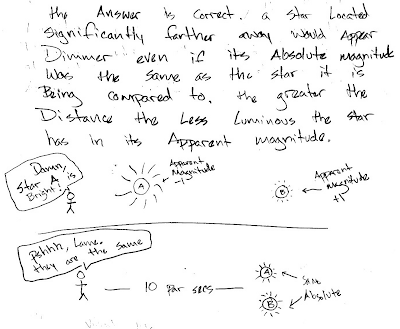Cuesta College, San Luis Obispo, CA
An article on an online science and science fiction discussion blog(*) discusses the past history and possibility of future colonization of Mars:
So, what happened on Mars? When volcanic activity halted on Mars...this once warm and inviting place, with enough atmospheric pressure and a high enough temperature to support liquid water, become a frozen rock with [a thin] atmosphere...Discuss how the end of volcanic activity on Mars caused temperatures to drop and its atmosphere to become thinner. Explain using the properties of greenhouse gases and geological activity.
(*)Jason Shankel, "How We Will Terraform Mars," December 19, 2011, io9.com/5868115/how-we-will-terraform-mars.
Solution and grading rubric:
- p:
Correct. Discusses features of the "runaway refrigerator" model of Mars' past: (a) Mars' small mass would make it unable to retain its atmosphere due to its slower escape velocity, (such that its atmosphere thins), and thus (b) unable to retain enough heat (such that its temperatures will drop). May also have discussed how Mars' oceans removed greenhouse gases from the atmosphere. - r:
Nearly correct (explanation weak, unclear or only nearly complete); includes extraneous/tangential information; or has minor errors. One of two points (a)-(b) correct, other is problematic/incomplete. - t:
Contains right ideas, but discussion is unclear/incomplete or contains major errors. Both points (a)-(b) problematic/incomplete, or one point correct while other is missing. - v:
Limited relevant discussion of supporting evidence of at least some merit, but in an inconsistent or unclear manner. At least understands factors that contribute to atmosphere retention and greenhouse effect. - x:
Implementation/application of ideas, but credit given for effort rather than merit. Discusses factors other than relevant to atmosphere retention and greenhouse effect. - y:
Irrelevant discussion/effectively blank. - z:
Blank.
Section 70158
Exam code: finalSor3
p: 7 students
r: 9 students
t: 9 students
v: 3 students
x: 1 student
y: 0 students
z: 0 students
Section 70160
Exam code: finalNon0
p: 6 students
r: 9 students
t: 8 students
v: 4 students
x: 0 students
y: 0 students
z: 0 students
A sample "p" response (from student 2192):








































